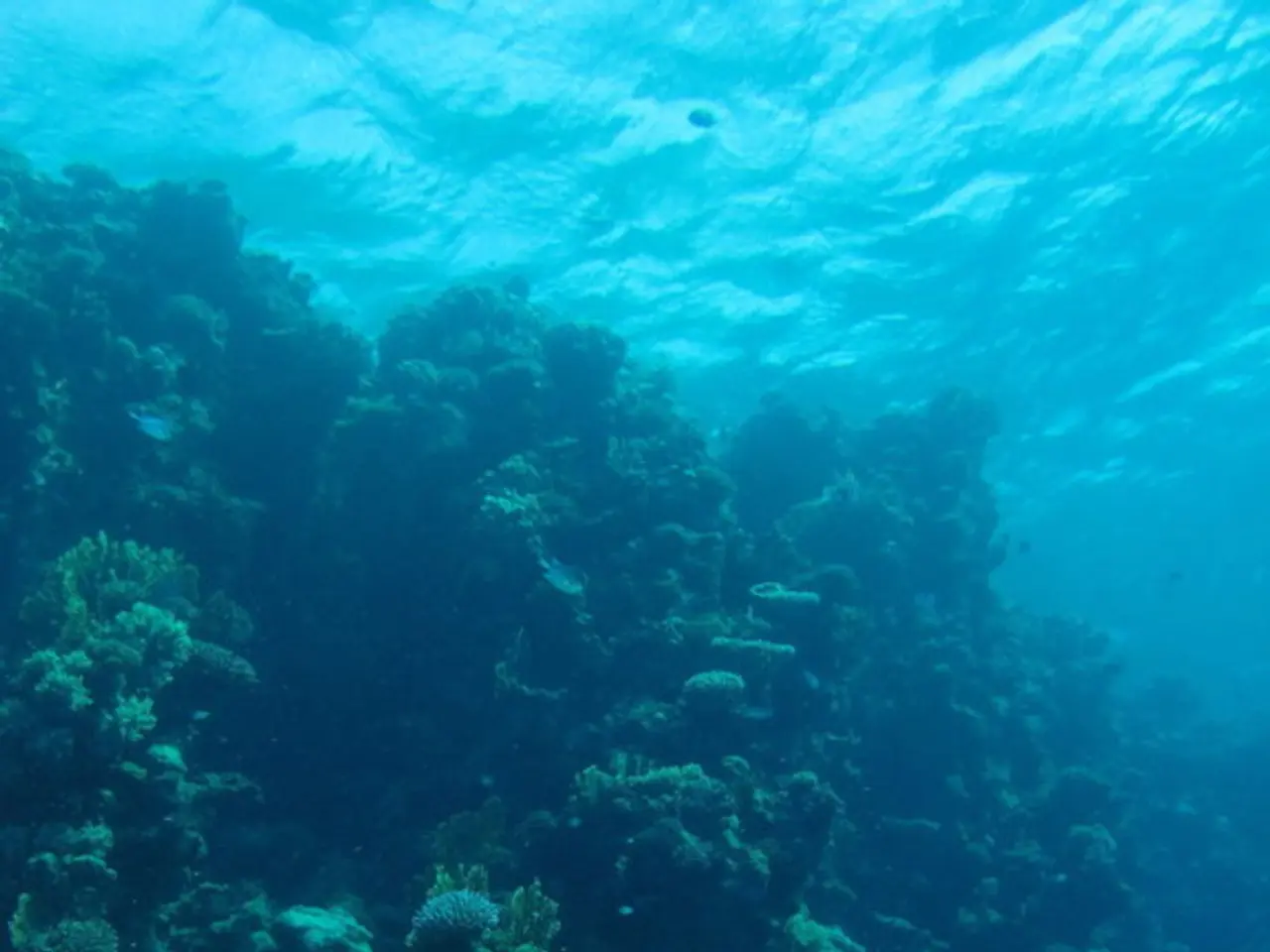Deep-sea biodiversity confronts inescapable hazards due to climate change - Research Findings
The deep ocean, a vast and mysterious ecosystem, is facing significant challenges due to climate change, a new study published in Nature Climate Change reveals. The research indicates that the deep ocean will experience accelerated warming in the coming decades, posing threats to its biodiversity.
Small mesopelagic fish, a crucial part of the tuna and squid fisheries and carbon transfer to deeper layers of the ocean, are at increased risk under future warming scenarios. According to the study, under RCP 8.5, the highest emissions scenario, the mesopelagic layer could experience climate velocities over 20 times faster than it currently witnesses due to rising ocean temperatures.
This rapid change is a serious threat to biodiversity, particularly to small mesopelagic fish from the genus Cyclothone. Researchers suggest that identifying areas at highest risk of biodiversity threat can be achieved by comparing climate velocity with species richness.
The bathypelagic and abyssopelagic ocean layers face additional threats from decreasing pH and oxygen levels. These layers, which are home to unique species adapted to stable thermal environments, are vulnerable to even slight temperature shifts, making them particularly susceptible to the impacts of climate change.
Climate change also affects biodiversity in the deepest ocean zones. Recent discoveries of extensive chemosynthetic ecosystems in hadal depths challenge previous assumptions about energy sources sustaining deep-sea life. These ecosystems may be more vulnerable to climate-induced changes in chemical and biological processes than previously thought. Changes in plankton communities in polar regions affect carbon cycling and deep-sea food webs, with potential global climate feedbacks.
The study challenges the preconceived idea that the risk to biodiversity in deep ocean ecosystems is reduced because the surface ocean warms twice as quickly. Climate velocities, which measure the rate at which marine species migrate laterally within the ocean in response to ocean warming, vary at different depths and directions, posing challenges to the design of protected areas.
International cooperation and an interdisciplinary approach are necessary to address the challenges faced by the deep ocean. The focus needs to be put on creating new protected areas at deep ocean depths by controlling seabed mining and deep-sea bottom fishing to preserve marine life. The deep ocean, being in remote and uninhabited regions, requires a recognition of global responsibility for effective conservation and mitigation of climate crisis effects on biodiversity in these mysterious ecosystems.
Under RCP 2.6, climate velocities in the mesopelagic layer are projected to increase by seven times, while the abyssopelagic layer will see velocities five and a half times faster than those currently seen in the surface ocean. This means that even under the most optimistic greenhouse gas emissions pathway, climate velocities are expected to increase at all ocean depths between 2050 and 2100.
The climate crisis poses a significant threat to deep sea biodiversity. As we move forward, it is crucial to continue researching and addressing these challenges to ensure the preservation of these vital ecosystems.
Read also:
- Peptide YY (PYY): Exploring its Role in Appetite Suppression, Intestinal Health, and Cognitive Links
- Toddler Health: Rotavirus Signs, Origins, and Potential Complications
- Digestive issues and heart discomfort: Root causes and associated health conditions
- House Infernos: Deadly Hazards Surpassing the Flames




